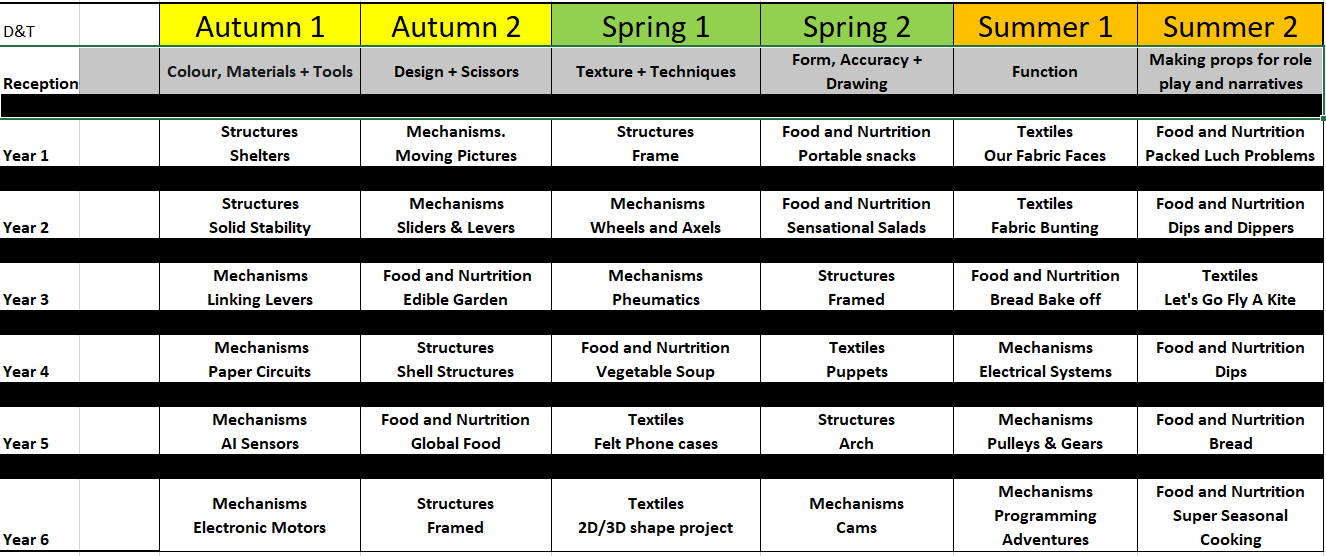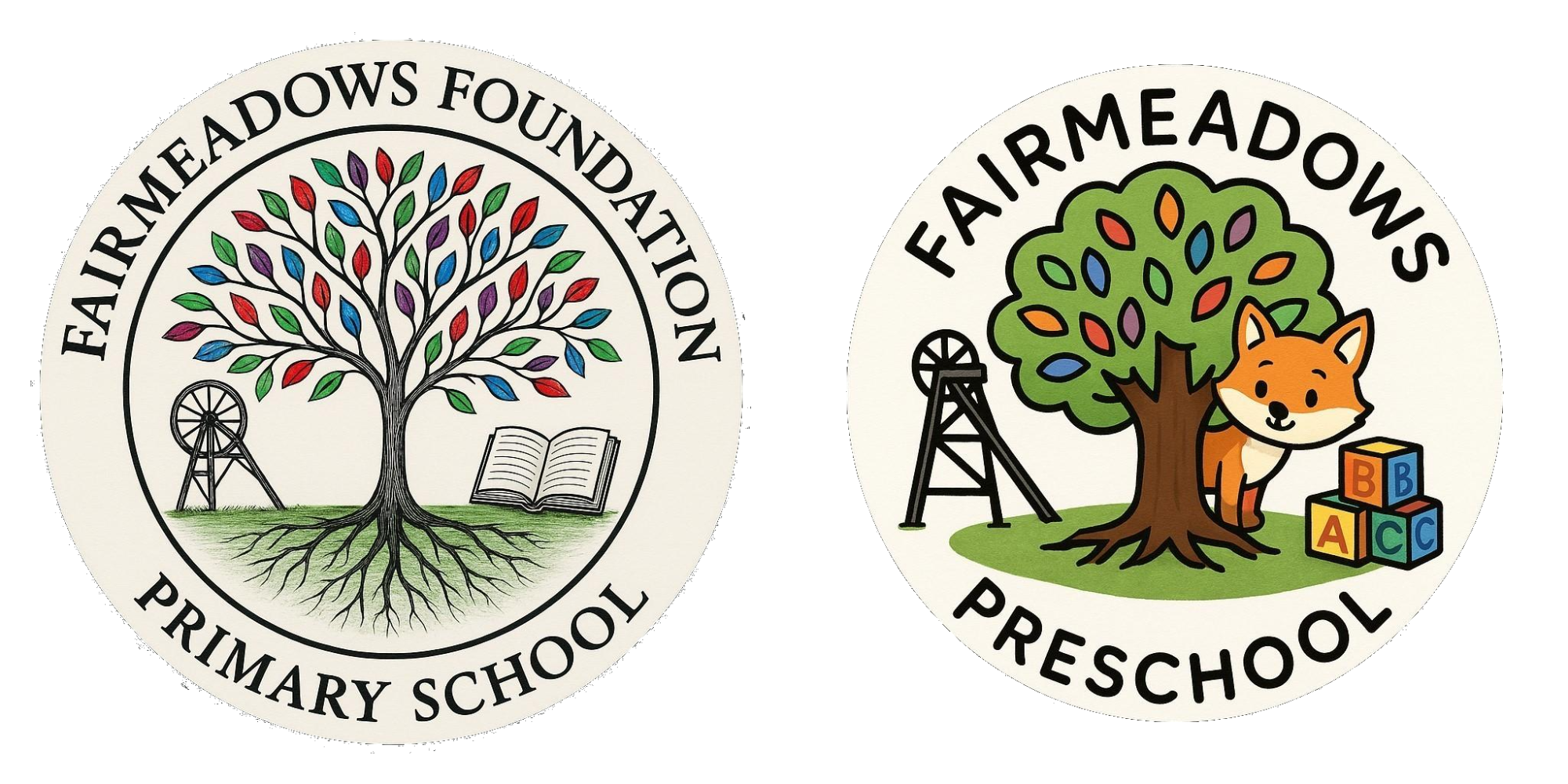Design &Technology

My name is Mrs Wassell, and I am the subject leader for DT at Fairmeadows Foundation Primary. I am passionate about DT and endeavour to teach our children to become creative and innovative thinkers. With an ever changing world, we aim to provide our pupils with the skills needed to create, design and build a variety of technology based products.
With this in mind, we have carefully planned our DT curriculum to offer all children the chance to experience all skills and components of DT required. We have taken the key content from the National Curriculum to provide a broad curriculum and considered how each classes skills and knowledge should develop throughout the school.
At Fairmeadows Foundation School, our vision is to enable children to master practical skills in order to make high quality products. We promote designing, making, evaluating and improving to support our pupils with seeing design as a process. Our children will take inspiration from design throughout history to appreciate the design process that has influenced the products we use in everyday life. Pupils have a passion for the subject and knowledge of, up-to date technological innovations in materials, products and systems.
Learning is a change to long-term memory. Our aims and goals are to ensure that our students experience a wide breadth of study and have, by the end of each key stage, long-term memory of an ambitious body of procedural and semantic knowledge.
This will be done using the following strategies:
Originality
We allow our pupils to show significant levels of originality and the willingness to take creative risks to produce innovation ideas and prototypes. They have the ability to carry out thorough research, show initiative and ask questions to develop an exceptionally detailed knowledge of users’ needs.
Obligation
We responsibly ensure children use time efficiently, work ethically, constructively and productively with others, act as responsible designers and makers and manage risks well to manufacture products safely and hygienically.
Outlook
Our pupils will have a thorough knowledge of which tools, equipment and materials to use to make their products, apply mathematical knowledge and have an excellent attitude to learning and independent working as a result.
These are the key threshold concepts – ‘the big ideas’ underpinning this subject:
- Master practical skills
- Design, make, evaluate and improve
- Take inspiration from design throughout history
Curriculum
A Fairmeadows Foundation School we aim to provide a DT curriculum that is creative, inclusive, challenging and inspired by the real-world. It inspires future thinkers, innovators and problem solvers. It promotes curiosity and supports high quality teaching and learning. Through this carefully planned curriculum we enable all children to reach their full potential.
EYFS
In early years the focus is on exploring the world around them and developing the gross and fine motor skills they need to successfully approach the key stage one curriculum.
Within key stage 1 and 2, pupils follow a structured progression of skills focusing on food, materials, textiles, electrical and electronics, construction, mechanics and computing. Many units are designed to reflect the themes being taught within year groups and children are encouraged to make suggestions, evaluate and improve their designs during all parts of the process.
KS1
The primary national curriculum aims for all children, through a variety of creative and practical activities to be taught the knowledge, understanding and skills needed to engage in an iterative process of designing and making. They should work in a range of relevant contexts [for example, the home and school, gardens and playgrounds, the local community, industry and the wider environment].When designing and making, pupils should be taught to:
Design
- Design purposeful, functional, appealing products for themselves and other users based on design criteria
- Generate, develop, model and communicate their ideas through talking, drawing, templates, mock-ups and, where appropriate, information and communication technology
Make
- Select from and use a range of tools and equipment to perform practical tasks [for example, cutting, shaping, joining and finishing]
- Select from and use a wide range of materials and components, including construction materials, textiles and ingredients, according to their characteristics
Evaluate
- Explore and evaluate a range of existing products
- Evaluate their ideas and products against design criteria
Technical Knowledge
- Build structures, exploring how they can be made stronger, stiffer and more stable
- Explore and use mechanisms [for example, levers, sliders, wheels and axles] in their products.
KS2
Through a variety of creative and practical activities, pupils should be taught the knowledge, understanding and skills needed to engage in an iterative process of designing and making. They should work in a range of relevant contexts [for example, the home, school, leisure, culture, enterprise, industry and the wider environment].When designing and making, pupils should be taught to:
Design
- use research and develop design criteria to inform the design of innovative, functional, appealing products that are fit for purpose, aimed at particular individuals or groups
- generate, develop, model and communicate their ideas through discussion, annotated sketches, cross-sectional and exploded diagrams, prototypes, pattern pieces and computer-aided design
Make
- select from and use a wider range of tools and equipment to perform practical tasks [for example, cutting, shaping, joining and finishing], accurately
- select from and use a wider range of materials and components, including construction materials, textiles and ingredients, according to their functional properties and aesthetic qualities
Evaluate
- investigate and analyse a range of existing products
- evaluate their ideas and products against their own design criteria and consider the views of others to improve their work
- understand how key events and individuals in design and technology have helped shape the world
Technical Knowledge
- apply their understanding of how to strengthen, stiffen and reinforce more complex structures
- understand and use mechanical systems in their products [for example, gears, pulleys, cams, levers and linkages]
- understand and use electrical systems in their products [for example, series circuits incorporating switches, bulbs, buzzers and motors]
- apply their understanding of computing to program, monitor and control their products.
Assessment
At Fairmeadows Foundation Primary School we all agree that the effective assessment of children’s learning helps us to ensure that each child makes expected or exceeding progress.
By the end of each project, all of the children should show an improved understanding of the National Curriculum content that has been taught and learned. Throughout each project we track .children’s progression. This enables us to have a clear overview of progression at the end of the year.

